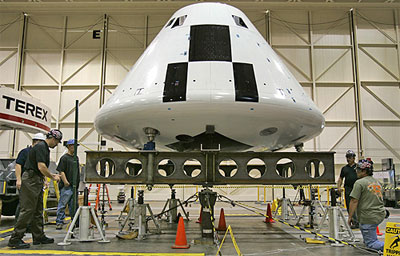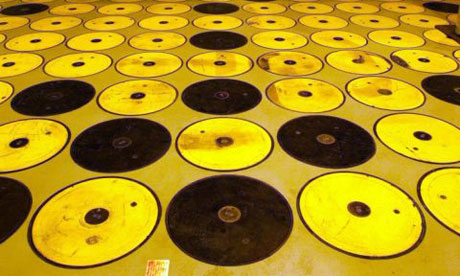Kelly Zito, Chronicle Staff WriterTwo decades ago, water breached a levee on Tyler Island, 8,800 acres along the northeastern edge of the Sacramento-San Joaquin River Delta, wiping out crops, damaging buildings and nearly destroying the Mello family's farming business. Steve Mello worries the same thing may happen again - with the approval of state policymakers who are considering whether to save some islands if increasingly fragile levees fail. It's a familiar scenario for Mello, who has heard proposals in the past to flood the land in the name of restoring a sensitive ecosystem that also serves as the hub of California's water supply.
"I feel like a lamb surrounded by wolves, and every time you turn to deal with one, another one is nipping at you," said Mello, who farms about 2,500 acres of alfalfa, corn, pears, potatoes and wheat.
Fewer structures have been more critical to California's development than the 1,100 miles of earthen levees that help funnel water through the 1,300-square-mile confluence of the Sacramento and San Joaquin rivers. That water, mostly runoff from mountain snowpack, flows through a web of channels to mammoth pumps in the southern delta, sending billions of gallons of water to 25 million Californians.
But the levees are in trouble, experts say. Rising seas, earthquakes, subsiding land and floods pose dire threats on top of the escalating repair costs to the state. Rather than allowing nature to decide when and how the levees give way, many researchers and policymakers say, California should manage the inevitable reshaping of the delta by deciding which levees to repair after a disaster.
No rules exist yet. But beginning this year, government, scientists, planners, environmentalists and water agencies will attempt to reconcile their views on the barriers that have defined the delta for so long.
"The delta is two or three different places," said Will Travis, executive director of the San Francisco Bay Conservation and Development Commission. "From the perspective of the environmentalists, the delta is a piece of geography like San Francisco Bay or Yosemite that is near and dear. For water users, the delta is really a broad, leaky ditch and the water has to get from one side of delta through south side of delta."
Levee failures common
Over the last 100 years, delta levees failed 166 times and all but three were restored. In the next century, according to a recent, influential report by the Public Policy Institute of California, the average island at the core of the delta has a 99 percent chance of being inundated by levee failure.
The study concluded that as many as 19 islands in the delta's central area should not be repaired, depending on whether their property value includes land, structures and equipment. Many of those islands have infrastructure that includes railroads, bridges, aqueducts and energy facilities. As many as a dozen should be repaired, according to UC Davis scientists who wrote the report, while 11 are undetermined.
Tyler Island, where land and assets are worth about $126 million, may not be worth saving, they say.
The 2004 flooding of one island - Jones Tract - provided a stark example of the analysis that should go into a decision on any island, the experts say. A levee along the western side of the island collapsed, resulting in six months of repairs and pumping that cost $90 million, including $60 million in tax funds. The island's land was valued at $42 million, while assets on the island were worth about $500 million.
The cost of buttressing all delta levees to widely used standards runs into the billions.
"The delta means a lot of things, but what it doesn't mean (is) that all levees that presently exist must continue to exist and be maintained at taxpayers' expense without regard for benefit, difficulty or rationality of doing so," said Phil Isenberg, chairman of the governor's Delta Vision Blue Ribbon Task Force, a panel tasked with developing a sustainable delta management plan.
Sinking land biggest risk
A colossal earthquake, a 100-year rainstorm and the forecast of a 4 1/2-foot rise in the sea level by 2100: Each poses threats to the delta's levees, many of which sit below the level prescribed by the U.S. Army Corps of Engineers.
But scientists say one weakness compounds all of those calamities: land subsidence.
In the 150 years since some of the levees were first carved out using horse-drawn dredgers, the land protected by the levees has sunk dramatically - pushing some of it 25 feet below sea level. Scientists say such differences are putting huge stress on the levees, raising the possibility of breaks or seepage. Fears grew after the catastrophic collapse of New Orleans' levees after Hurricane Katrina in 2005.
A drive around Tyler Island shows that some of Mello's fields sit near the island's average elevation of 9 feet below sea level. But Mello, whose family first bought land on Tyler in 1968, believes most delta islands are not as vulnerable as some experts suggest. The lowest subsidence occurs at the center of most islands, not up against the levees, Mello said, and farmers who cultivate two-thirds of the delta's 740,000 acres are using techniques to prevent erosion. Those include less-intensive farming, less burning to level land and growing fewer crops like white asparagus, which turned the topsoil "to flour," Mello said.
In addition, reclamation districts are spending millions to upgrade their levees, including about $6 million in the last eight years to raise 7 miles of levees on Tyler Island by about a foot. "I believe many of these farms, if not all of them, can be farmed indefinitely," Mello said.
He said forcing or allowing the levees to dissolve poses other major dangers, including the release of mercury accumulated in the levees during the region's strip-mining days. While environmentalists say creating tidal marshes and open water could boost important fish and plant populations, Mello and others say islands act as buffers for each other.
"There are difficulties finding one of the major islands you could flood and leave flooded without having a domino effect," said Tom Zuckerman, a retired Stockton water lawyer who now works with the Central Delta Water Agency. "You won't just lose one island; you'll lose the adjacent ones downwind."
Scenarios for the future
The debate over the delta levees will take on new urgency in the coming years as the state grapples with how to fix a water system plagued by leaky plumbing, booming demand and concerns over ecological damage.
A controversial proposal to construct a so-called peripheral canal - which would route water from the Sacramento River around the delta to pumps in the south - dovetails with the idea to let some delta islands return to marsh or open water. In such a scenario, any increase in salty water from the broader bay-delta estuary wouldn't affect the fresh Sacramento water streaming through the separate canal.
But many of the 6,000 people who live in the delta's interior say that option doesn't recognize important transportation lines, historic communities, schools, Victorian hotels, sought-after recreational activities and family farms.
Today's delta is a far cry from the tidal marsh that pre-dated modern development or the early operations of the Gold Rush. Many experts agree the delta's mix of islands and waterways has harmed native fish and plants that depended on the ebb and flow between river and bay.
Radical change is coming, they argue, whether forced by man or nature.
"With the delta, the natural systems are very dynamic and changing rapidly now," Travis said. "It's hard to have a political, legal, regulatory system that embraces that kind of change. It's hard, but we need to make some decisions."
After working for two years away from the ranch, Mello's son Gary, 22, came back to drive combines, work on irrigation systems and learn the intricacies of accounting. Mello, 53, hopes the island survives long enough for the next generation to take over.
"I'm trying to make sure it evolves and passes to them as a viable business," Mello said. "I think they're pulling the plug way too early."
Which levees should be saved?
Researchers at UC Davis say it may not make financial sense to save all of the at-risk Sacramento-San Joaquin River Delta levees. Map, Page A6



























